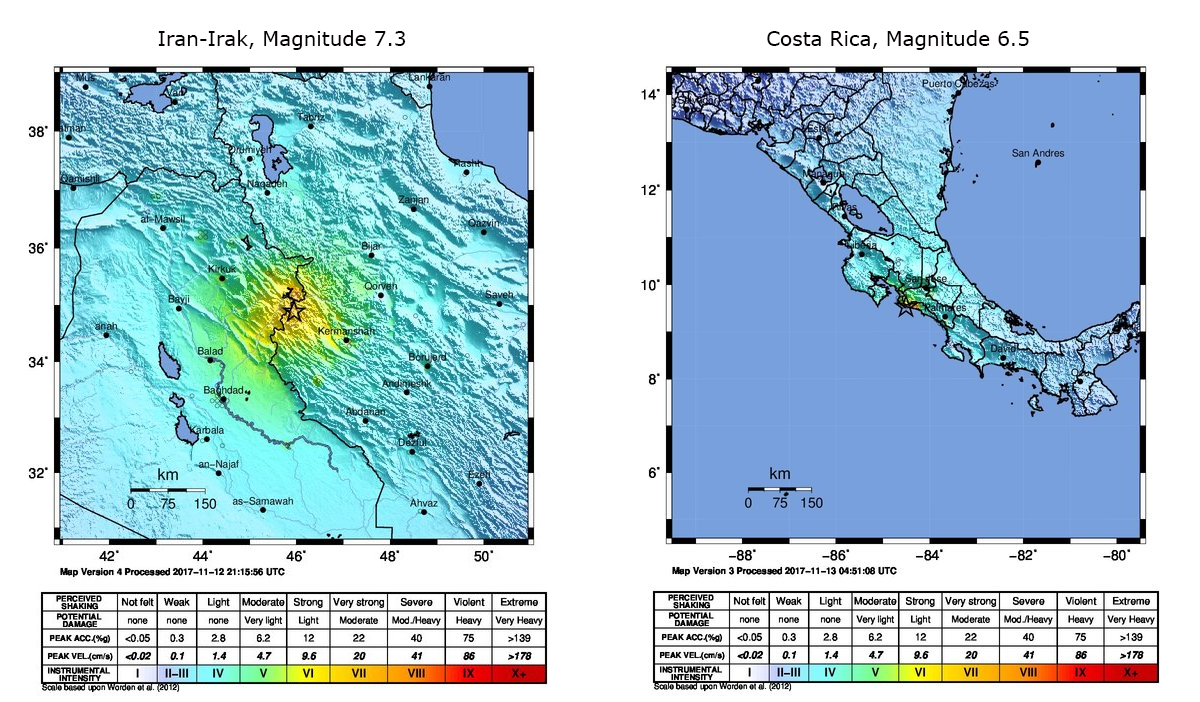2017-11-13
Severe earthquakes in the Iran-Iraq border region and in Costa Rica
A magnitude 7.3 earthquake occurred in the border region between Iran and Iraq, around 32 km south of Halabjah (220km northeast of Baghdad), at 6.18 p.m. (UTC, 9:48 p.m. Iran local time) on Sunday, 12 November. According to the US Geological Survey, the earthquake originated at a depth of approximately 23 km. The quake was strongly felt in both countries, as well as their close neighbours. Given the earthquake's magnitude and depth, severe and widespread damage is to be expected.
The earthquake occurred at the compressional boundary between the Arabian and Eurasian plates, where the Arabia plate is moving towards the north with respect to Eurasia at a rate of about 26 mm/yr. The shallow location of the event and the rupture mechanism are consistent with the plate boundary related structures in this region.
Read more...The extent of damage is currently difficult to estimate, given the remoteness of the affected area. However, due to the poor local building design, significant damage is expected. Half a day after the event media report already more than 300 fatalities.
A magnitude 4.3 earthquake occurred approximately one hour before the main event about 60 km southeast, which could be interpreted as a foreshock. Such foreshocks are known to sometime precede large events, however many of the large events occur without precursors. That a smaller event was actually a foreshock can only be determined in hindsight. In the meantime, several aftershocks have been reported, including a Magnitude 5.3 aftershock that hit 10 minutes after the mainshock. That event was large enough to further destabilize buildings damaged by the first event. The aftershocks, including strong ones, will continue for several weeks to months, possibly generating more damage.
In the night from Sunday to Monday, 13 November, at 2:28 a.m. (UTC) another large earthquake struck Costa Rica. The event had a magnitude of 6.5 and originated at a depth of approximately 20 km (US Geological Survey). The shaking was widely felt and potential damage to buildings is to be expected in the epicentral region. The earthquake has not triggered a tsunami warning. Costa Rica is located on a convergent plate boundary (subduction zone), where the Cocos Plate slides under the Caribbean Plate at a rate of approximately 9 cm/yr. The relative movement of the two plates generates considerable tension that is repeatedly discharged in the form of strong earthquakes with large damage potential. The most recent severe earthquake occurred in September 2012 with a magnitude of 7.6.
There is no connection between the events in the Iran-Iraq border region and in Costa Rica.
